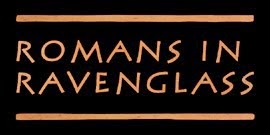A day conference at The Theatre by the Lake, Keswick
Sunday 3 November 2013
The Lake District is a unique combination of natural landscape
modified by millenia of human activity. During this conference, learn
about recent projects carried out by local groups, individuals and
organisations, including the National Trust.
Programme
10.00 Introduction
Vivienne Rees, Chair of Historic Environment Advisory Group, Lake District National Park Authority
10.05 Archaeology in the Lake District National Park 2012-13
John Hodgson, Lake District National Park Authority
10.15 Reflections on History – survey and investigation of slate quarrying in Great Langdale and early mining near Grasmere
Jamie Quartermaine, Oxford Archaeology North and Jamie Lund, National Trust
11.10 Questions and Discussion
11.15 Coffee/tea
11.45 Survey of long houses in the Duddon Valley
Peter Matthiessen, Duddon Valley Local History Group
12.05 Recent work of the Cumbria Amenity Trust Mining History Society
Warren Allison, CATHMS
12.25 Geophysical survey and excavation of the Roman vicus at Ravenglass
Kurt Hunter-Mann, York Archaeological Trust
12.55 Questions and Discussion
1.00 Lunch
2.00 Geophysical survey of the Roman fort and vicus at Ambleside
Jamie Lund, National Trust
2.10 The Roman settlement project at Maryport
Stephen Rowland, Oxford Archaeology North
2.45 Coffee/tea
3.10 Discovering Derventio: recent archaeological investigation of the Roman site at Papcastle
Frank Giecco, Wardell Armstrong Archaeology
3.50 Questions and Discussion
4.00 Finish
How much is it?
Conference including tea and coffee: £13 each
Conference including tea, coffee and buffet lunch: £19.25 each
If you require a parking voucher please add £2
How to book
Please fill in the
Archaeology Conference Form (PDF) and send a cheque for the appropriate amount (payable to LDNPA) to:
LDNPA
Murley Moss
Oxenholme Road
KENDAL LA9 7RL
Alternatively call 01539 724555 with your debit or credit card details.
Closing date
The conference normally sells out, so please don't wait too long! The final date for bookings is Monday 28 October 2013.
Parking
There is a pay and display car park next to the Theatre. There is a discount for parking on any long stay car park in Keswick
with Allerdale Borough Council. A day rate of £2 is payable only in
advance.
Please tick the box on the form and add £2 to your payment if you need a parking voucher.
Details also at:
http://www.lakedistrict.gov.uk/learning/lakedistrictfacts/archaeologyhistory/archaeologyconference















